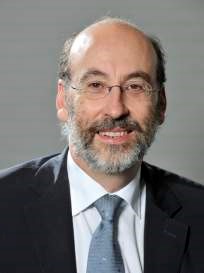 Jacques Serre, 60, graduated from the ENSAE aeronautical engineering school. He joined Snecma in 1979, starting in the design department and is named head of the mechanical engineering division in 1998, then Chief Engineer for the M88 program. In 2003, he is appointed head of engineering in Snecma’s Space Engines division and named Snecma Space activities Vice President in 2007. In 2013 he is appointed Vice President Engineering & Technology.
Jacques Serre, 60, graduated from the ENSAE aeronautical engineering school. He joined Snecma in 1979, starting in the design department and is named head of the mechanical engineering division in 1998, then Chief Engineer for the M88 program. In 2003, he is appointed head of engineering in Snecma’s Space Engines division and named Snecma Space activities Vice President in 2007. In 2013 he is appointed Vice President Engineering & Technology.
The aviation industry is, today more than ever, a global business, operating beyond national or even regional frameworks. What are the main challenges for the industry in this respect, in particular with regards to safety?
One of the main challenges for industry is to demonstrate compliance with worldwide recognized airworthiness standards for safety management of our aeronautical products. This standard needs to be international and respected by all the actors of the commercial aviation community: It is important to apply same airworthiness rules all over the world, in China, Europe, Russia, US… and same safety and quality level with regards to design, manufacturing, repair or fleet support for a Type Certificate holder, a part manufacturer, a repair shop or an on-wing support organisation.
How can the regulators support this international dimension of the industry, while ensuring the same, high level safety standards?
According to me, the key words are Agency’s certification/continued airworthiness support to the industry and worldwide recognized Airworthiness Regulation, harmonized with the main world Agencies. These are typical assignments for regulators with the objective to take into account the best technical experience, to focus certification rules on safety mandatory requirements while allowing more flexibility for the Manufacturer to demonstrate conformity to the rule. A good example of cooperation between industry and authorities has been provided through the certification of the new technology woven composite fan blade and case of the CFMI LEAP engines with the establishment, early in the game, of a shared vision of the needs in term of safety for the engine, in term of objectives for demonstration by analysis, similarities and tests, and in term of process capability to define adequate level of quality survey.
How do you expect EASA’s role at international level to evolve in the future?
Aeronautical products are now used all over the world, meaning that our engines are installed on many non-EU aircraft manufacturers (Boeing, COMAC, Sukhoi…), in which countries the ICAO regulation requires local validation. Moreover, International cooperation between industrials is becoming the standard of many major recent aviation projects. In that frame, it is of prime importance for the EU industry that EASA establish Airworthiness Agreements with major Agencies to ease the Certification and Safety management at international level. EASA, as a major player in that area, is promoting that evolution and Safran is honored to contribute to such project.
The map of international aviation is changing rapidly: new countries and regions are emerging with strong growth numbers and industrial plans. Can Europe keep up?
This evolution is not a threat, it is a wonderful opportunity for Safran Aircraft Engine and all the manufacturers who have developed during the last decades, robust innovating technologies and a real knowhow in term of international cooperation. With the support of EASA, Europe has all the qualities to remain a major player in aviation industry.


